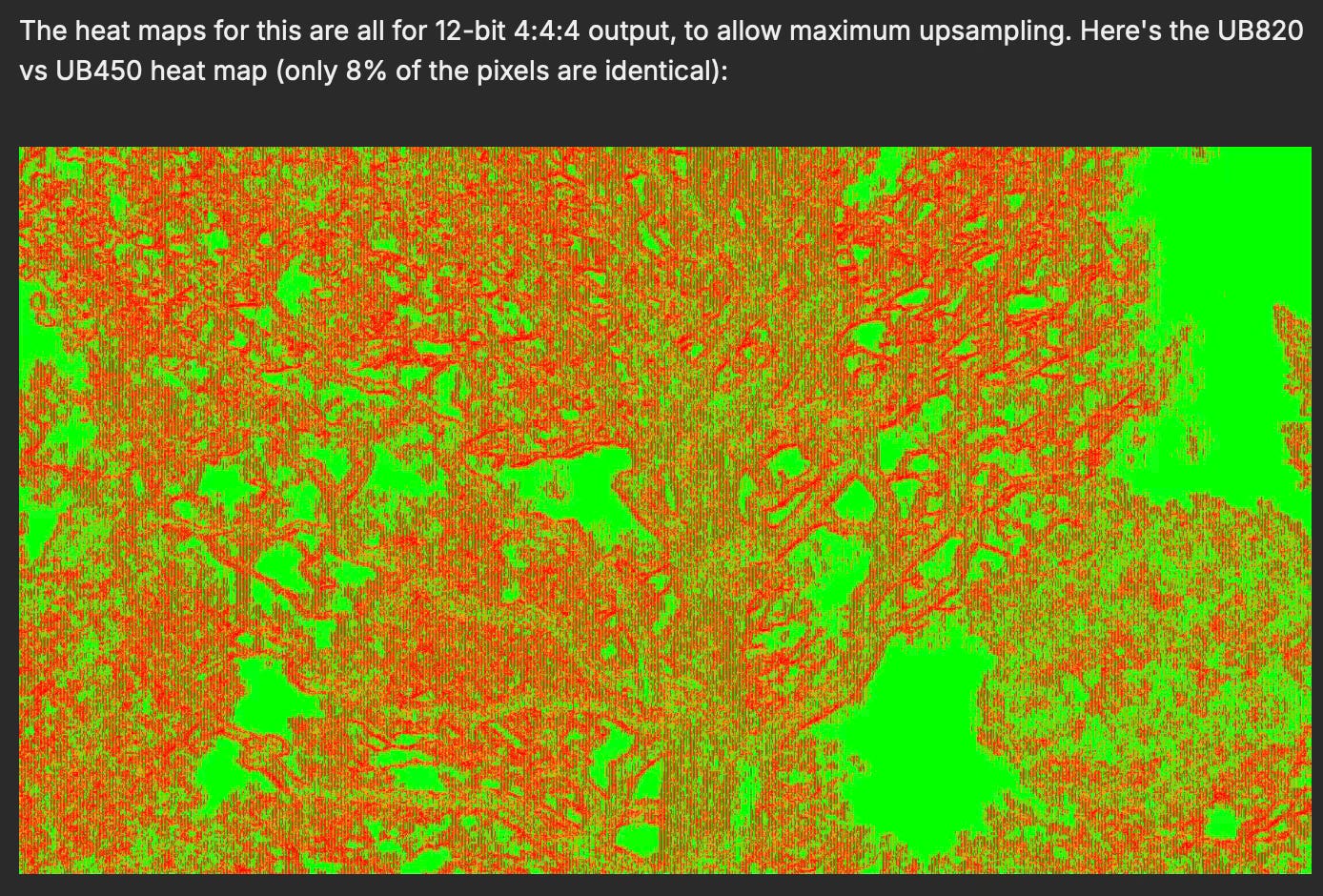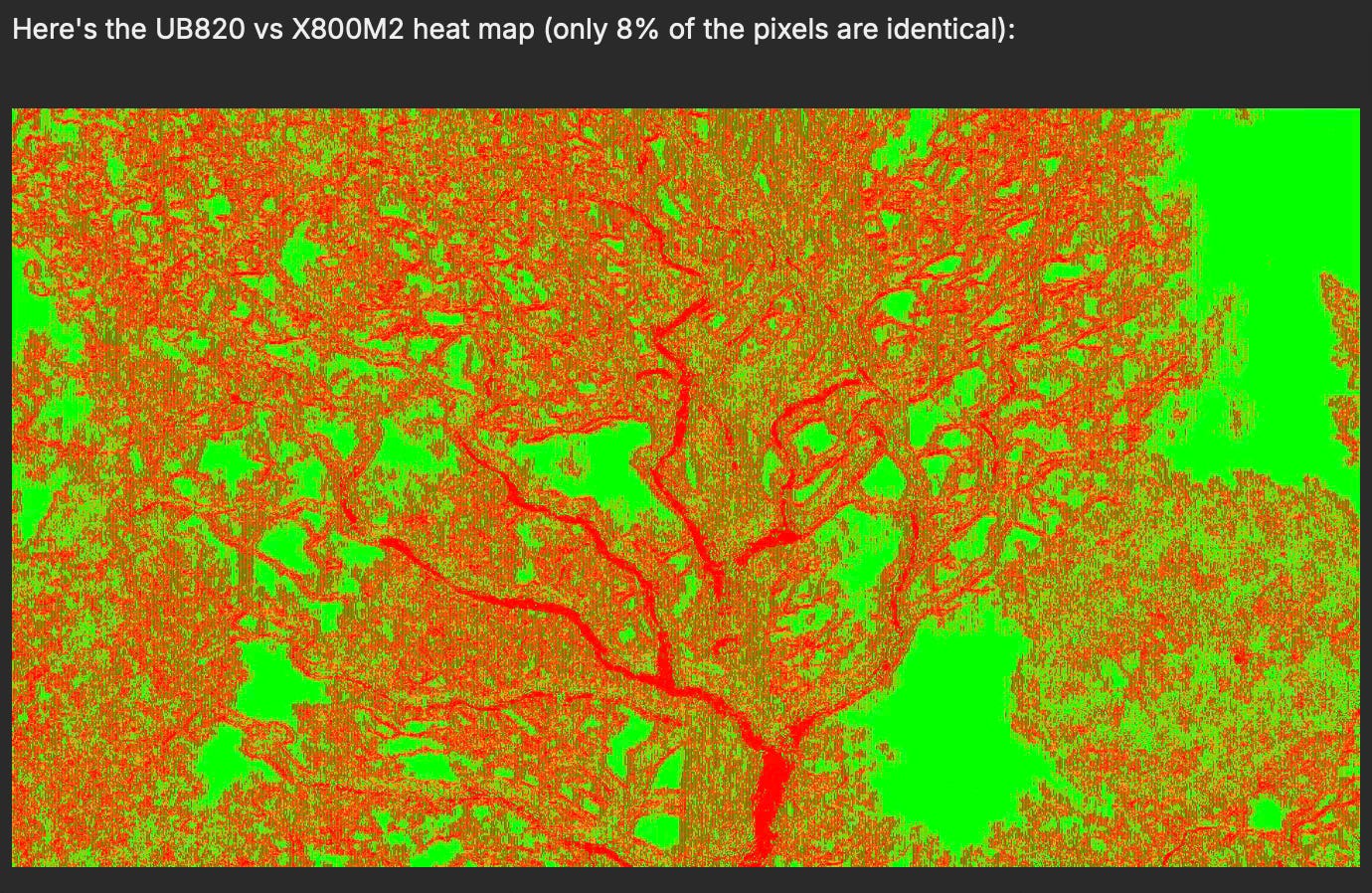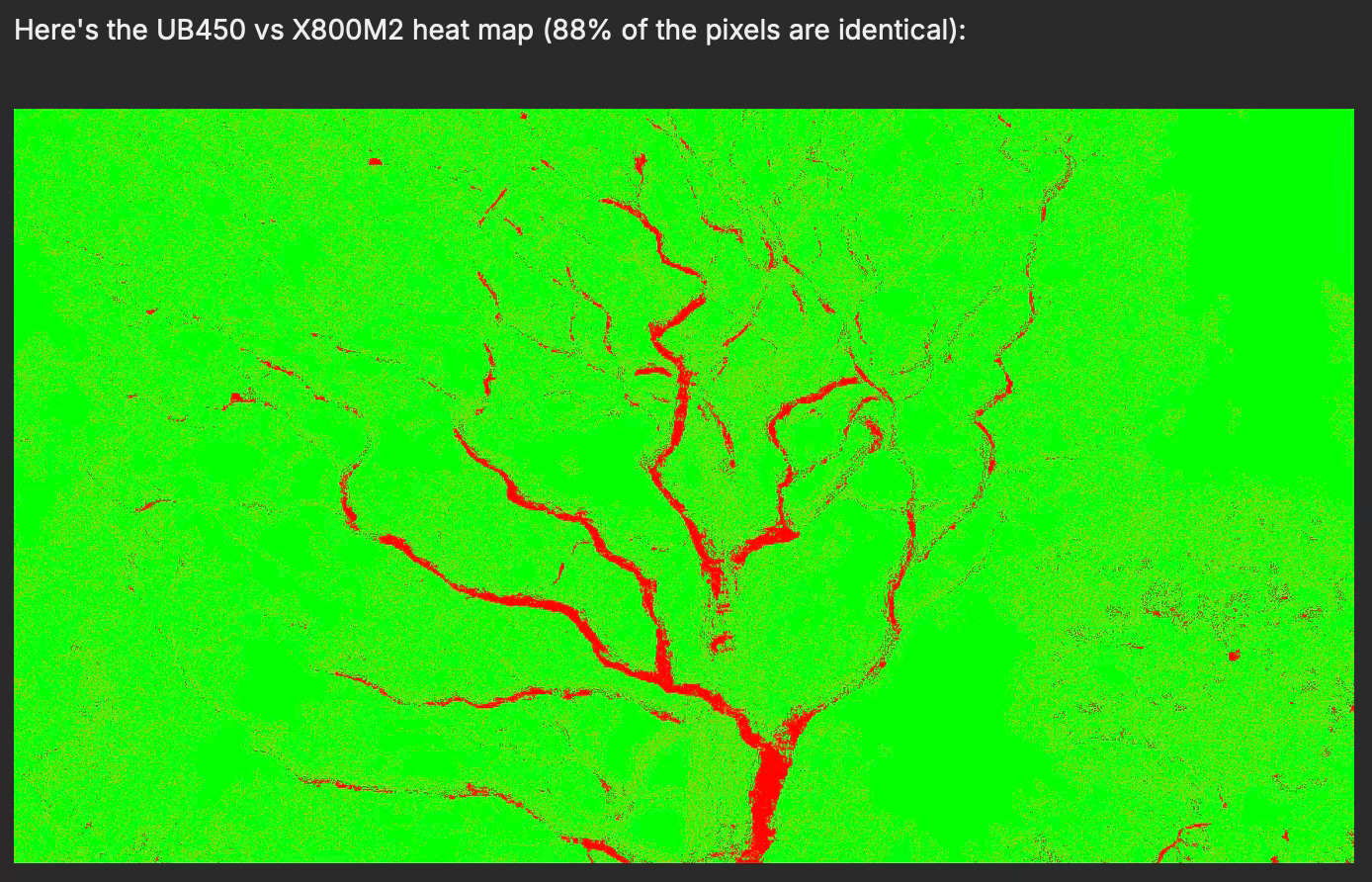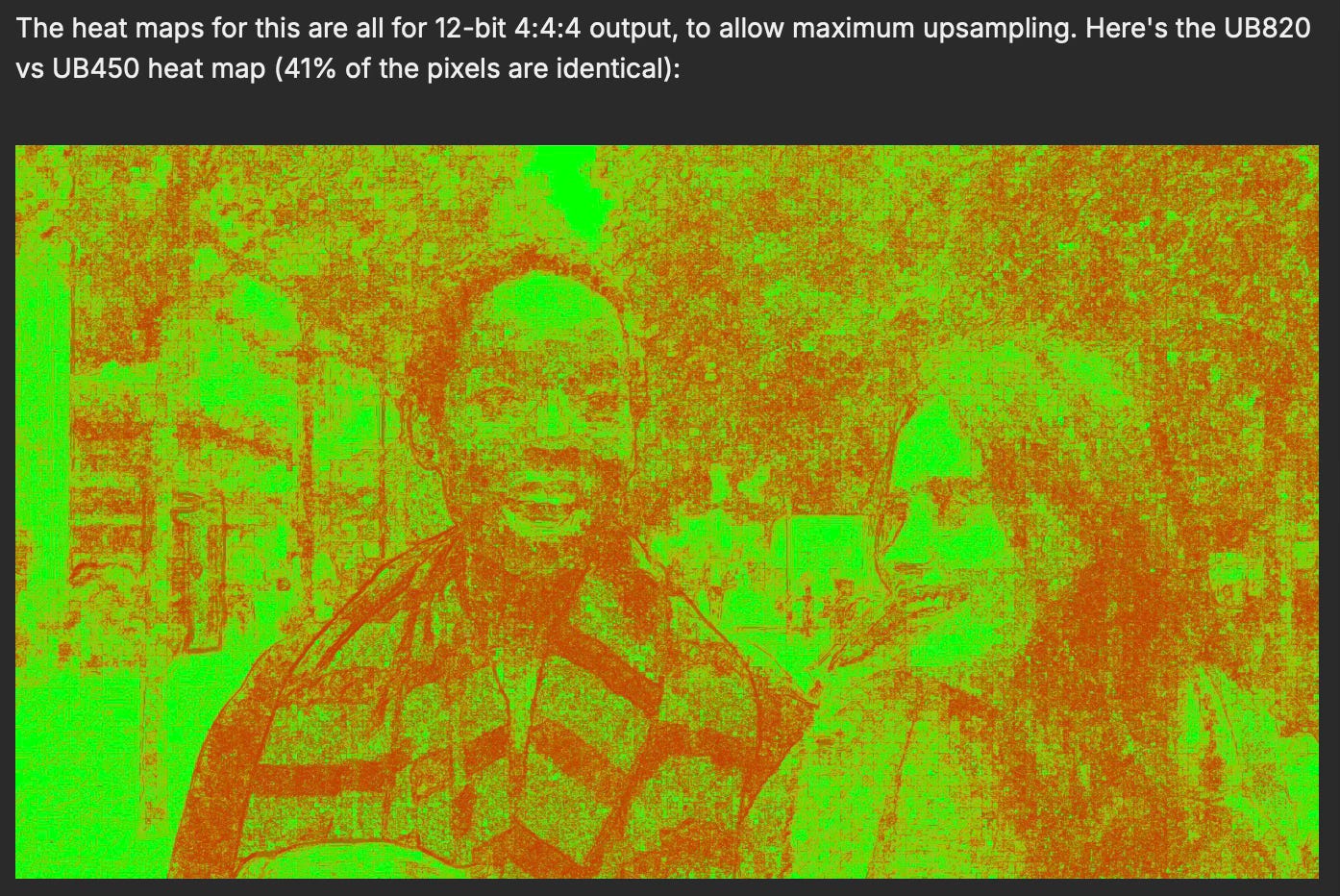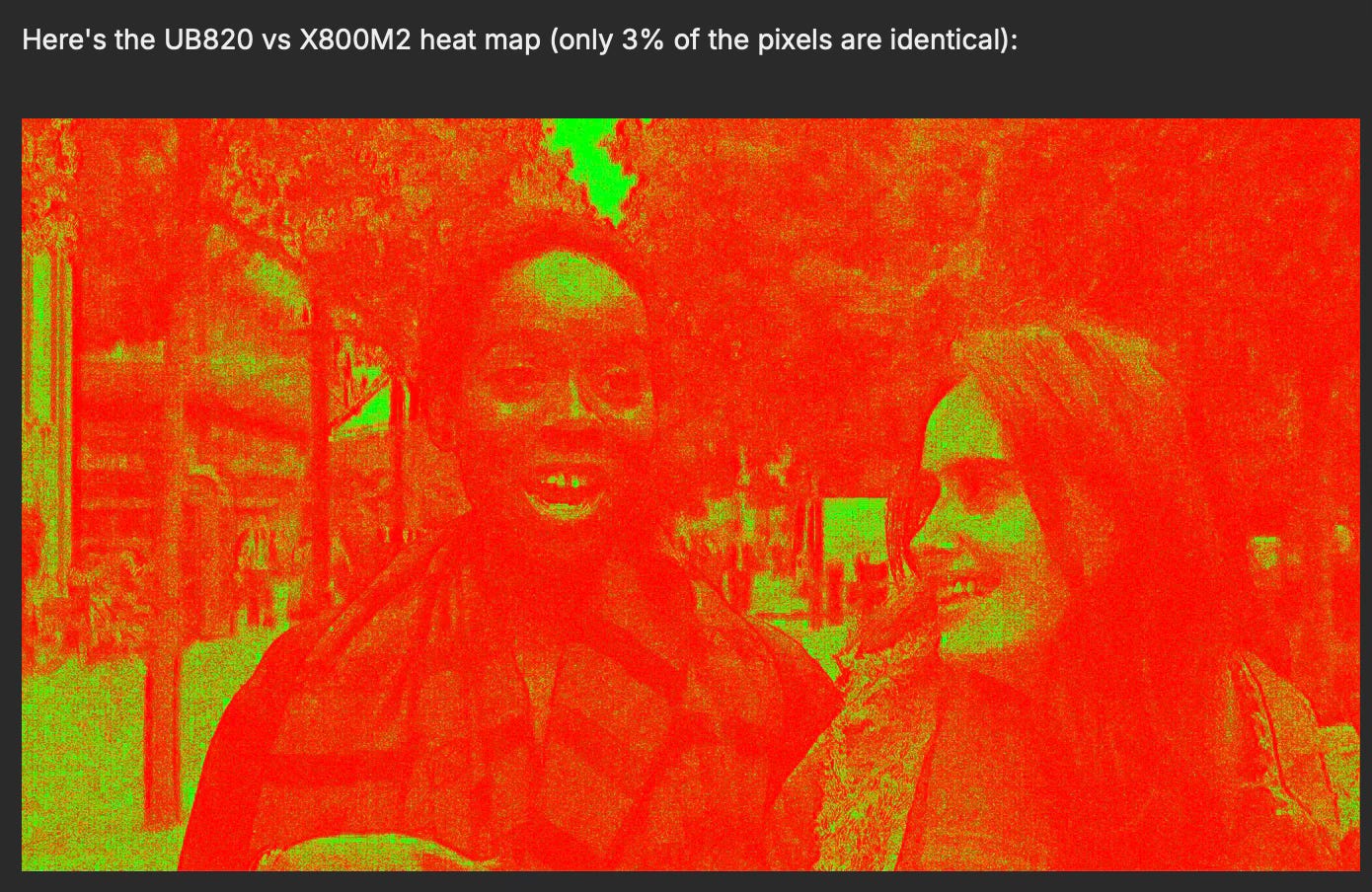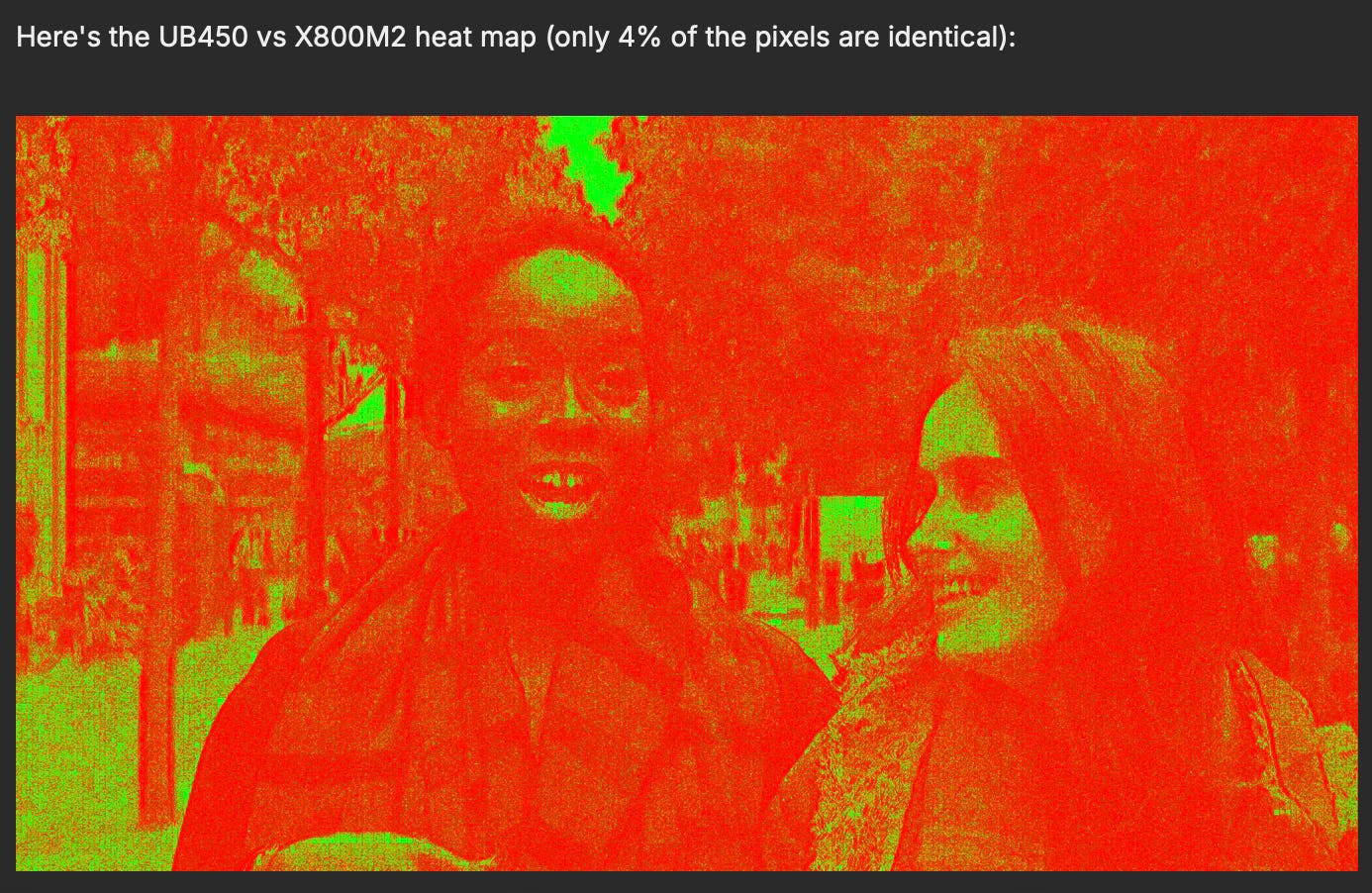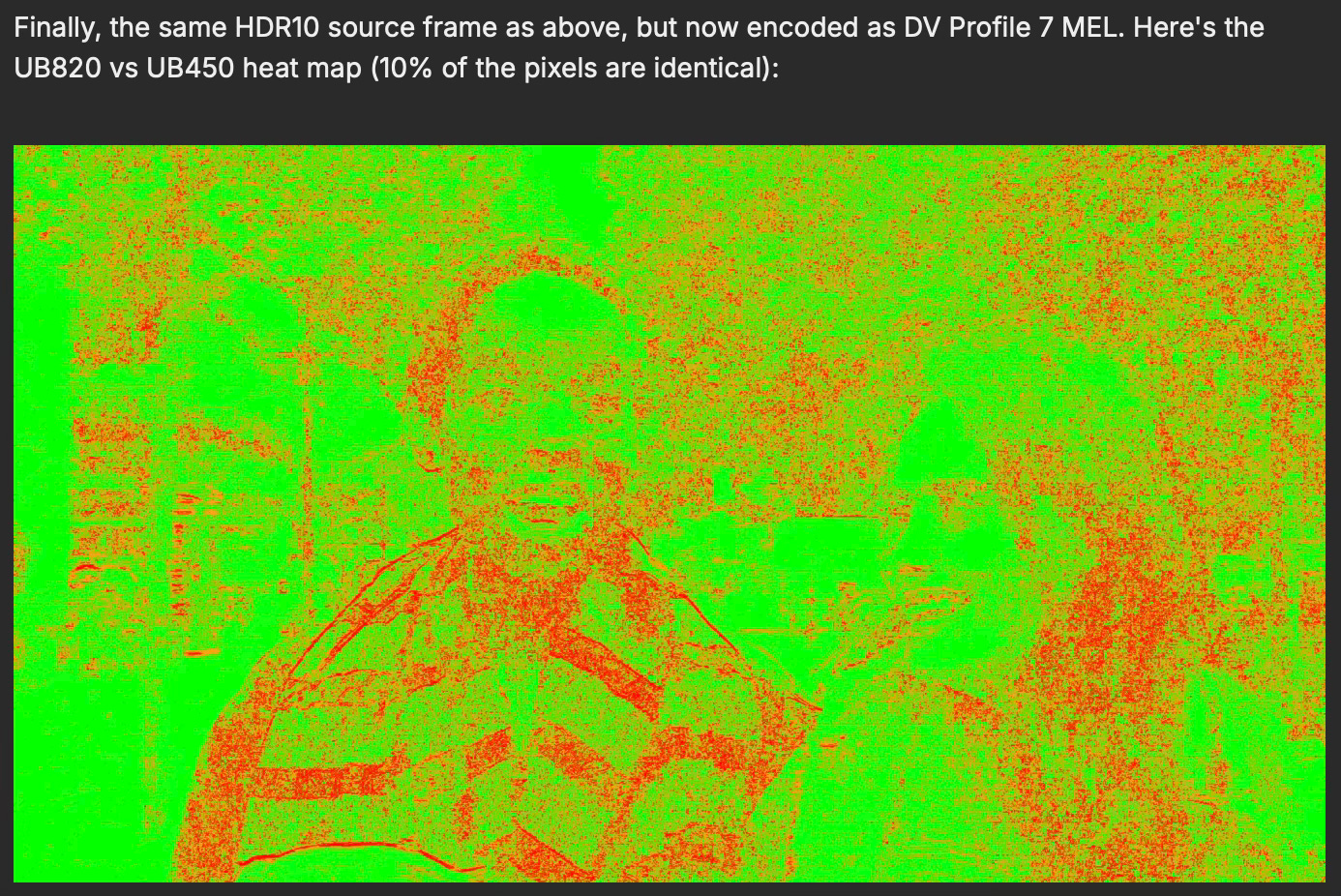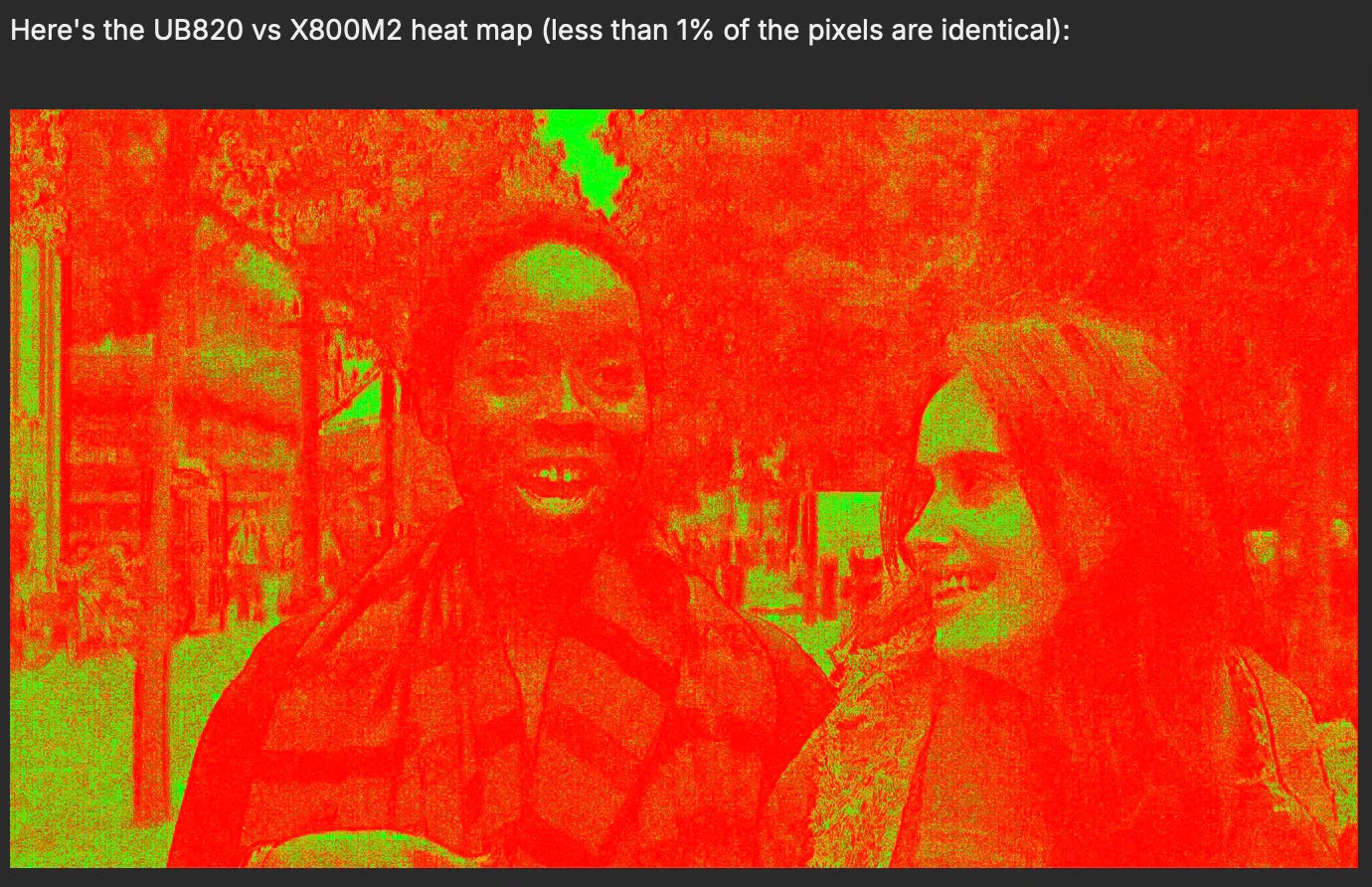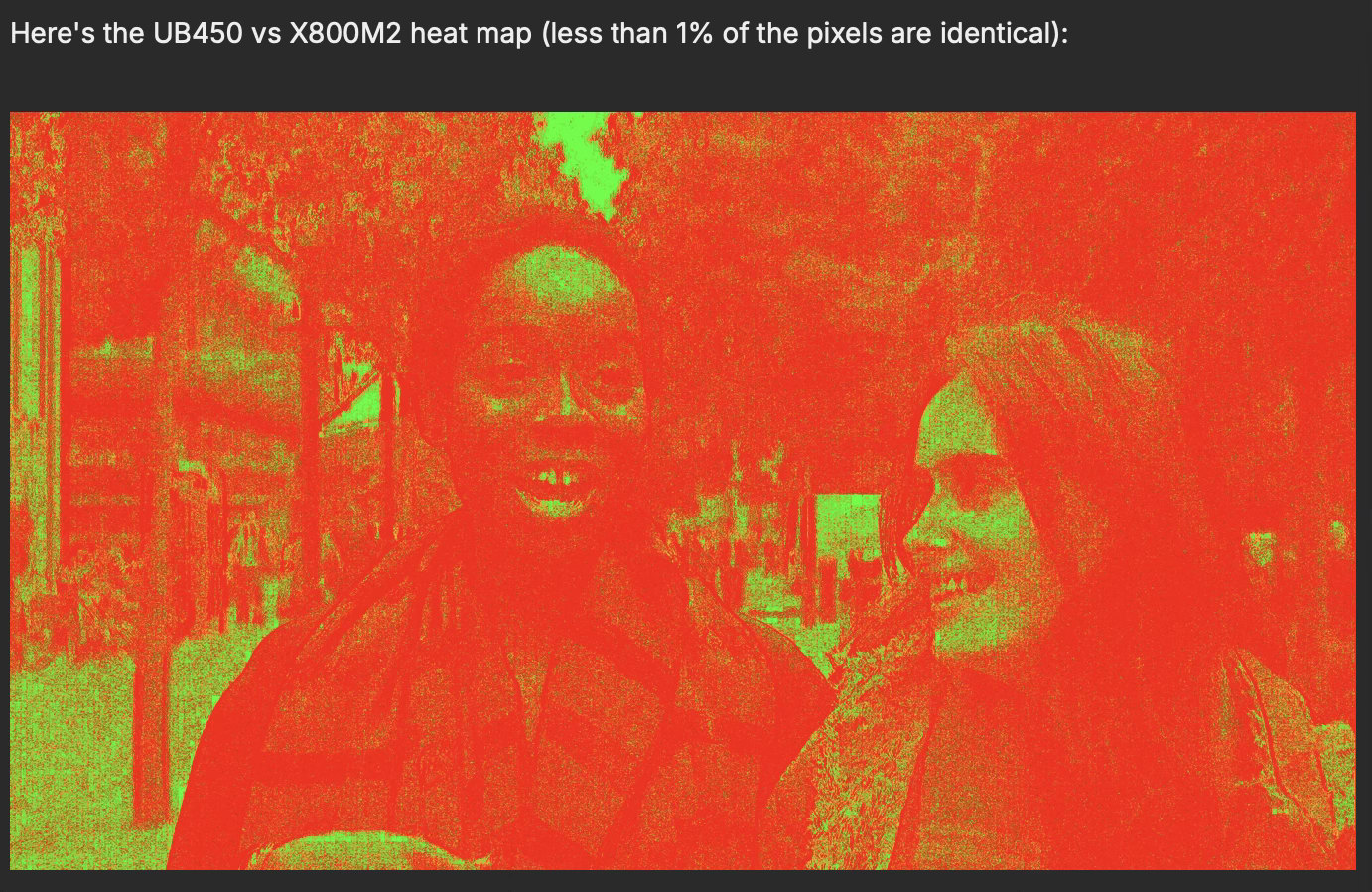Myself included, the phrase “bits is bits” is often uttered to indicate that one digital source is going to be as transparent to the content as another digital source. This is true……except when it’s measurably not…..which is apparently always the case with most or all consumer video formats.
With video, especially with HDMI, and UHD, and HDR, things have become complicated. (Though this issue existed since the DVD era.) There is upsampling, and decoding, and other rendering activity that many formats require of the player, before the video ever leaves the device. So being “transparent to the source” requires more than just a “passthrough” output option, which does not really exist, and instead requires as few errors in reconstructing the original signal as possible. And it turns out, this can be objectively measured…..and almost all devices fail to some degree.
User Thoth over at the AVS forum has done quite a few tests of different playback devices in this way.
For example, a Roku unit he tested is remarkably inaccurate in its output: https://www.avsforum.com/threads/official-roku-4k-hdr-premiere-ultra-owners-thread.2604017/post-64039852. Even the venerated AppleTV has troubles.
Even within one player, the different ways Dolby Vision get decoded (player led versus display led) show gross differences: https://www.avsforum.com/threads/apple-tv-owners-thread-faq-in-first-post.1278071/post-63894847
Or watching HDR10 output of an AppleTV of a Netflix title available in DV: https://www.avsforum.com/threads/apple-tv-owners-thread-faq-in-first-post.1278071/post-63415236
And it’s not a happy story on the audio side, either: https://www.avsforum.com/threads/apple-tv-owners-thread-faq-in-first-post.1278071/post-64022121
But what about disk players? Sure, streaming is the Wild West, but disk players should be the reference standard, no?
Nope. They differ. (TLDR: Panasonic’s 820 appears far better than the Sony 800m2 when objectively measuring their output.) Bits is not bits when no player can simply output what is on the disk but must process it first.
See https://www.avsforum.com/threads/official-panasonic-dp-ub820-824-owners-thread-no-price-talk.2990966/post-64066103 where Thoth writes (in part):
“For any given source type and output configuration, the UB820, UB450, and X800M2 have identical straight color accuracy (ignoring upscaling and upsampling). However:
The UB450 can't be configured for SDR 8-bit 4:4:4 output, which is the only output configuration that would have perfect straight color accuracy.
The X800M2 can't be configured for HDR 10-bit 4:4:4 output (if the display also supports 12-bit 4:4:4), which is the only output configuration that would have perfect straight color accuracy unless the display processes 4:2:2 as 10-bit.
The upsampling is different across all three players. To give a flavor of that, here are some dEITP heat maps showing player vs player output comparisons (not comparisons to the source frame). In the heat map, green means dEITP <= 1, orange means dEITP between 1 and 3, and red means dEITP > 3.”
And Thoth goes on to show visual examples:
Want to dive deeper? These two additional posts have more data and explanation. Suffice to say, bits are bits — except no device really delivers the raw bits.
https://www.avsforum.com/threads/official-panasonic-dp-ub820-824-owners-thread-no-price-talk.2990966/post-64067119
https://www.avsforum.com/threads/official-panasonic-dp-ub820-824-owners-thread-no-price-talk.2990966/post-64070136
https://www.avsforum.com/threads/official-panasonic-dp-ub820-824-owners-thread-no-price-talk.2990966/post-64070606
Thoth is not the only person to point out how differently these devices handle different content.
User HDR Dissector over at YouTube has also done a fair bit of objective research into this. Their video about the Ugoos video player is, in fact, a collection of these objective results of measuring the output of various HDMI source to see how accurate they are to the original content they are playing. (Strangely, HDR Dissector does not include the Panasonic UHD players in these comparison tests, which we know from user Thoth’s testing are likely to be the most accurate of the consumer playback devices on the market.)


